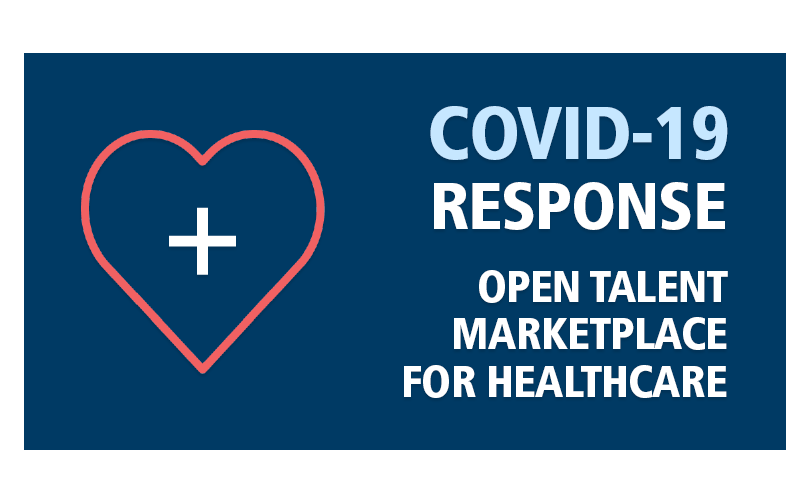
Mass Mobilization: Hospital Ships, Hotels and Convention Centers Accommodate Patients
Many hospitals across the United States are at maximum patient capacity as the battle against COVID-19 continues, resulting in some unique partnerships and outside-the-box strategies to address the shortage of beds.
Those partnerships just got a boost as The Centers for Medicare & Medicaid Services (CMS) issued a number of new rules March 30, providing local hospitals and healthcare systems with more flexibility when it comes to increasing hospital capacity, which it calls “hospitals without walls.”
The temporary new CMS rules circumvent current regulations and afford hospitals the opportunity to provide services in locations beyond their existing walls to outside facilities, including ambulatory surgery centers, rehabilitation hospitals, hotels and dormitories and still be able to receive hospital payments under Medicare.
Under the expansion opportunities hospitals can care for patients needing less intensive care, freeing up inpatient beds at their hospital.
Hospital Ships on Both Coasts
One approach to meeting the surge in COVID-19 needs involves the United States Navy and Navy Reserve deploying two hospital ships to increase patient capacity and provide additional relief efforts in some of the hardest hit areas. The ships are not taking COVID-19 patients onboard, but are being used as referral hospitals for patients seeking medical care for non-coronavirus related issues and illnesses. These non-commissioned ships are owned by the United States Navy but operated by Military Sealift.
On the West Coast, the USNS Mercy arrived in Los Angeles late March, and has treated at least 15 Los Angeles-area patients, according to Defense.gov. The 1,000-bed USNS Mercy hospital ship has more than 800 Navy medical personnel and support staff, and 70 civil service mariners aboard.
The medical team onboard can provide comprehensive medical care, including general surgeries, critical care and general ward care for adults. This allows onshore hospitals to focus on COVID-19 patients and free up ventilators and ICU beds for the patients whose lives rely on them.
On the East Coast, the USNS Comfort is providing aid to the epicenter of the crisis – New York City. Departing Norfolk, Virginia, on March 28, the ship arrived at Pier 88 in Manhattan on Monday, March 30. The USNS Comfort has the capacity for approximately 1,200 medical personnel and 1,000 beds.
The Comfort is one of the largest trauma facilities in the United States. It can take on patients with physical trauma, heart attacks and a variety of other issues, starting later this week. The hospital ship had previously been deployed to New York in the aftermath of the Sept. 11, 2001, terrorist attacks.

Hotels and Convention Centers Converting to Medical Use
In addition to floating hospitals, public health officials are tapping hotels and convention centers as sites for overflow patients. In fact, the US Army Corps of Engineers (USACE) has transformed the vast Jacob K. Javits Center in New York City into a field hospital with 1,200 total beds, with the ability to expand the capacity above 2,900 beds.
In addition, New York Gov. Andrew Cuomo has agreed to adapt four other Army Corps-identified facilities across the five boroughs into temporary medical hubs, including The Aqueduct Racetrack in Queens, the New York Expo Center in Bronx, CUNY Staten Island, and the Brooklyn Cruise Terminal in Red Hook. These four facilities will have the capacity for a combined 4,000 additional hospital beds.
The USACE has plans to add even more beds in the New York area by converting college dormitories and hotels that have been shuttered in the recent weeks. The group has the resources and expertise to build these temporary medical facilities in a matter of weeks and sometimes even days.
Meanwhile, officials from USACE are assessing a number of locations across the country for possible conversion to alternative care facilities, including sites in California, Washington, Texas and many other states.
Local governmental authorities are also working with hospitals and public health experts in their areas to address the growing patient loads. Last week, for instance, the mayor of Chicago announced that the city would be using five hotels to house and isolate people with exposure to the coronavirus or those with mild symptoms that don’t need to be hospitalized.
In addition to the “hospitals without walls,” regulatory easing, the CMS provided waivers permitting doctor-owned hospitals to increase their number of beds without incurring sanctions, CMS made it easier for providers to enroll in Medicare, and dialysis facilities will be able to establish special purpose facilities to care for patients with COVID-19.
Article reprinted with permission from American Mobile Healthcare
Sources: www.cms.gov/about-cms/emergency-preparedness-response-operations/current-emergencies/coronavirus-waivers; www.governor.ny.gov/news/amid-ongoing-covid-19-pandemic-governor-cuomo-accepts-recommendation-army-corps-engi



